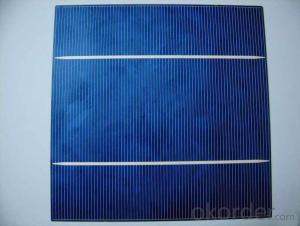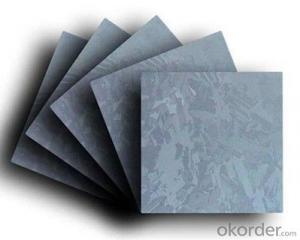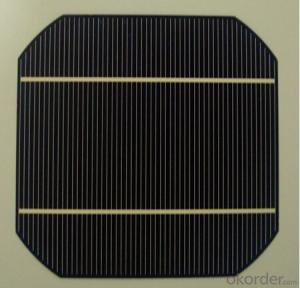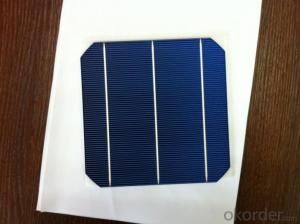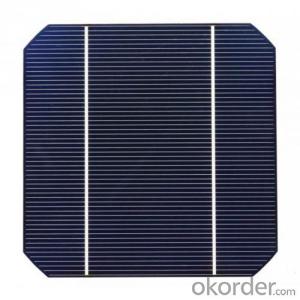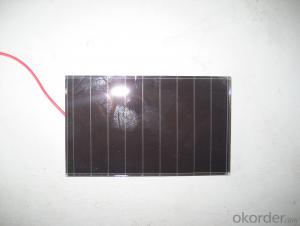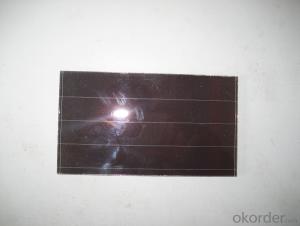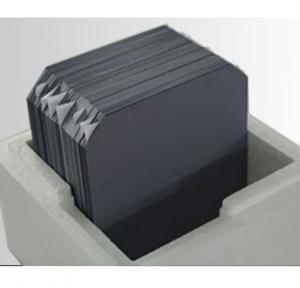6*6 High Efficiency Mono Silicon Solar Cell
- Loading Port:
- China main port
- Payment Terms:
- TT OR LC
- Min Order Qty:
- 100 watt
- Supply Capability:
- 10000 watt/month
OKorder Service Pledge
OKorder Financial Service
You Might Also Like
Solar Module Summarize
Solar Module is the core part of solar PV power systems,also is the highest value part of it. The function of Solor Module is to convert the sun's radiation to electrical energy, or transfer it to battery and store in it, or to drive the load running.
The Product has been widely used in space and ground, it mainly used for power generation systems, charging systems, road lighting and traffic signs areas. It could offer a wide range of power and voltage, and with high conversion efficiency, and long service life.
Main Characteristic
17.6%-18% High Efficiency A Grade 125mm Monocrystalline Solar Cells
1.First-class production technology and packaging technology.
2.Adopting the world's leading technology of silicon and polycrystalline silicon cells, power density, peak hours more battery power, higher conversion efficiency.
3.Beautiful, stable, easy to take down the anodic aluminum frame electric degrees and has a wind-resistant, anti-snow function.
Features
17.6%-18% High Efficiency A Grade 125mm Monocrystalline Solar Cells
1.High transmissivity low-iron tempered glass, strong aluminium frame.
2.Manufactured according to international quality and Environment Management System (ISO9001, ISO14001).
3.Low voltage-temperature coefficient allows higher power output at high-temperature condition.
Product Pictures
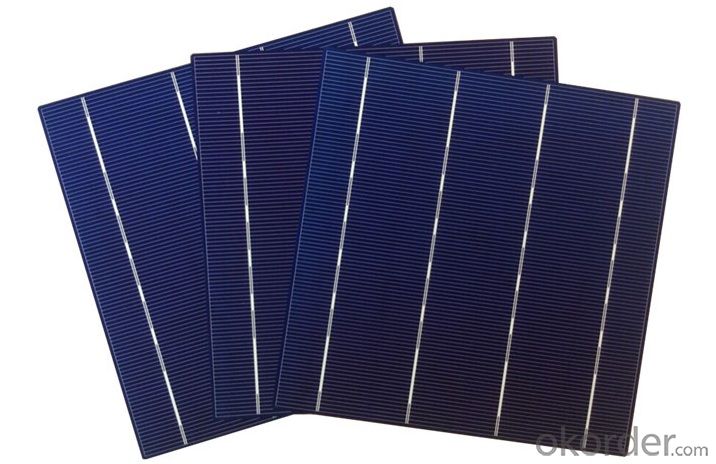
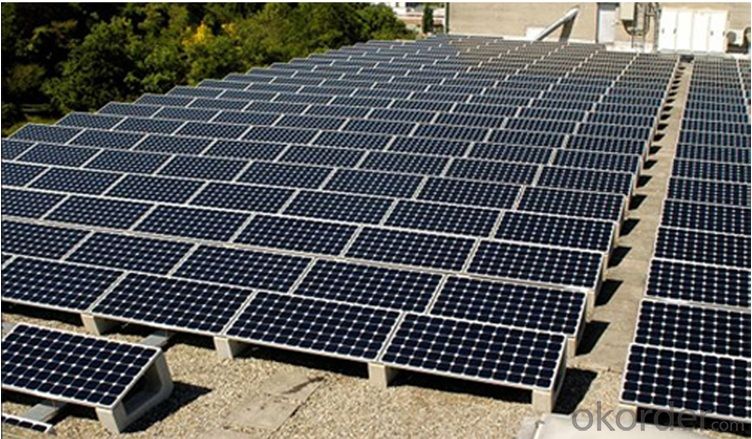
- Q:How are solar silicon wafers recycled at the end of their life cycle?
- Solar silicon wafers can be recycled at the end of their life cycle through a multi-step process. First, the wafers are collected from old or defective solar panels. Then, they undergo a mechanical shredding process to break them down into smaller pieces. These pieces are then treated with chemicals to remove any impurities or contaminants. Next, the purified silicon pieces are melted down and formed into new wafers or ingots, which can be used in the production of new solar panels. This recycling process helps recover valuable materials and reduces the environmental impact of discarded solar panels.
- Q:What is a good solar wafer testing equipment?
- To develop solar energy, we must overcome two key challenges: cost and yield." In the solar panel manufacturing process, from the front to the back, from the crystal rod, wafer, chip to the module, any one of the links in error, will affect the number of solar panel products. Therefore, the solar cell needs to be able to monitor every step of the process in the production process of detection tools. QCROBOT also has many successful cases in this field.
- Q:What is the size of a typical solar silicon wafer?
- A typical solar silicon wafer is typically around 156mm (6.14 inches) in size.
- Q:How do solar silicon wafers contribute to the decentralization of energy production?
- Solar silicon wafers contribute to the decentralization of energy production by enabling the generation of electricity at the point of consumption. By converting sunlight into electricity, solar silicon wafers allow households, businesses, and even communities to produce their own energy on-site, reducing reliance on centralized power plants and grid infrastructure. This decentralization promotes energy independence, increases resilience, and reduces transmission losses, while also facilitating a shift towards cleaner and renewable sources of energy.
- Q:What is the role of anti-reflective coatings on solar silicon wafers?
- The role of anti-reflective coatings on solar silicon wafers is to minimize reflection and maximize light absorption. These coatings help to increase the efficiency of the solar cells by reducing the amount of light that is reflected away from the surface of the wafer. By minimizing reflection, more light is able to penetrate the silicon material, leading to higher energy conversion rates and improved overall performance of the solar panel.
- Q:How does the efficiency of a solar silicon wafer vary with different angles of sunlight?
- The efficiency of a solar silicon wafer varies with different angles of sunlight. The ideal angle for maximum efficiency is when the sunlight is perpendicular to the surface of the wafer. As the angle deviates from perpendicular, the efficiency decreases. This is because the photons have to travel a longer distance through the silicon material, resulting in higher chances of absorption and scattering, thus reducing the overall conversion of sunlight into electricity.
- Q:Can solar silicon wafers be used in marine applications?
- Yes, solar silicon wafers can be used in marine applications. However, proper sealing and protection from moisture and corrosion are necessary to ensure their longevity and performance in marine environments.
- Q:Are solar silicon wafers flexible or rigid?
- Solar silicon wafers are rigid.
- Q:How do solar silicon wafers perform in polluted environments?
- Solar silicon wafers generally perform well in polluted environments, although excessive pollution can have a negative impact on their efficiency. Dust, smog, and other pollutants can accumulate on the surface of the wafers, reducing the amount of sunlight that reaches the solar cells and thus decreasing their power output. Regular cleaning and maintenance can help mitigate the effects of pollution and ensure optimal performance of solar panels in polluted areas.
- Q:How do solar silicon wafers compare to other types of solar cell technologies?
- Solar silicon wafers, commonly used in crystalline silicon solar cells, have several advantages over other types of solar cell technologies. Firstly, they have high efficiency levels, with conversion rates reaching up to 25%. Additionally, silicon wafers are well-established and have a long track record of reliability and durability. They are also readily available and affordable due to mass production. However, silicon wafers require a significant amount of energy and resources during manufacturing. In contrast, other solar cell technologies like thin-film solar cells may have lower efficiency but offer flexibility, lighter weight, and lower manufacturing costs. Ultimately, the choice between solar silicon wafers and other technologies depends on specific requirements such as cost, efficiency, and application.
1. Manufacturer Overview |
|
|---|---|
| Location | |
| Year Established | |
| Annual Output Value | |
| Main Markets | |
| Company Certifications | |
2. Manufacturer Certificates |
|
|---|---|
| a) Certification Name | |
| Range | |
| Reference | |
| Validity Period | |
3. Manufacturer Capability |
|
|---|---|
| a)Trade Capacity | |
| Nearest Port | |
| Export Percentage | |
| No.of Employees in Trade Department | |
| Language Spoken: | |
| b)Factory Information | |
| Factory Size: | |
| No. of Production Lines | |
| Contract Manufacturing | |
| Product Price Range | |
Send your message to us
6*6 High Efficiency Mono Silicon Solar Cell
- Loading Port:
- China main port
- Payment Terms:
- TT OR LC
- Min Order Qty:
- 100 watt
- Supply Capability:
- 10000 watt/month
OKorder Service Pledge
OKorder Financial Service
Similar products
New products
Hot products
Hot Searches
Related keywords
